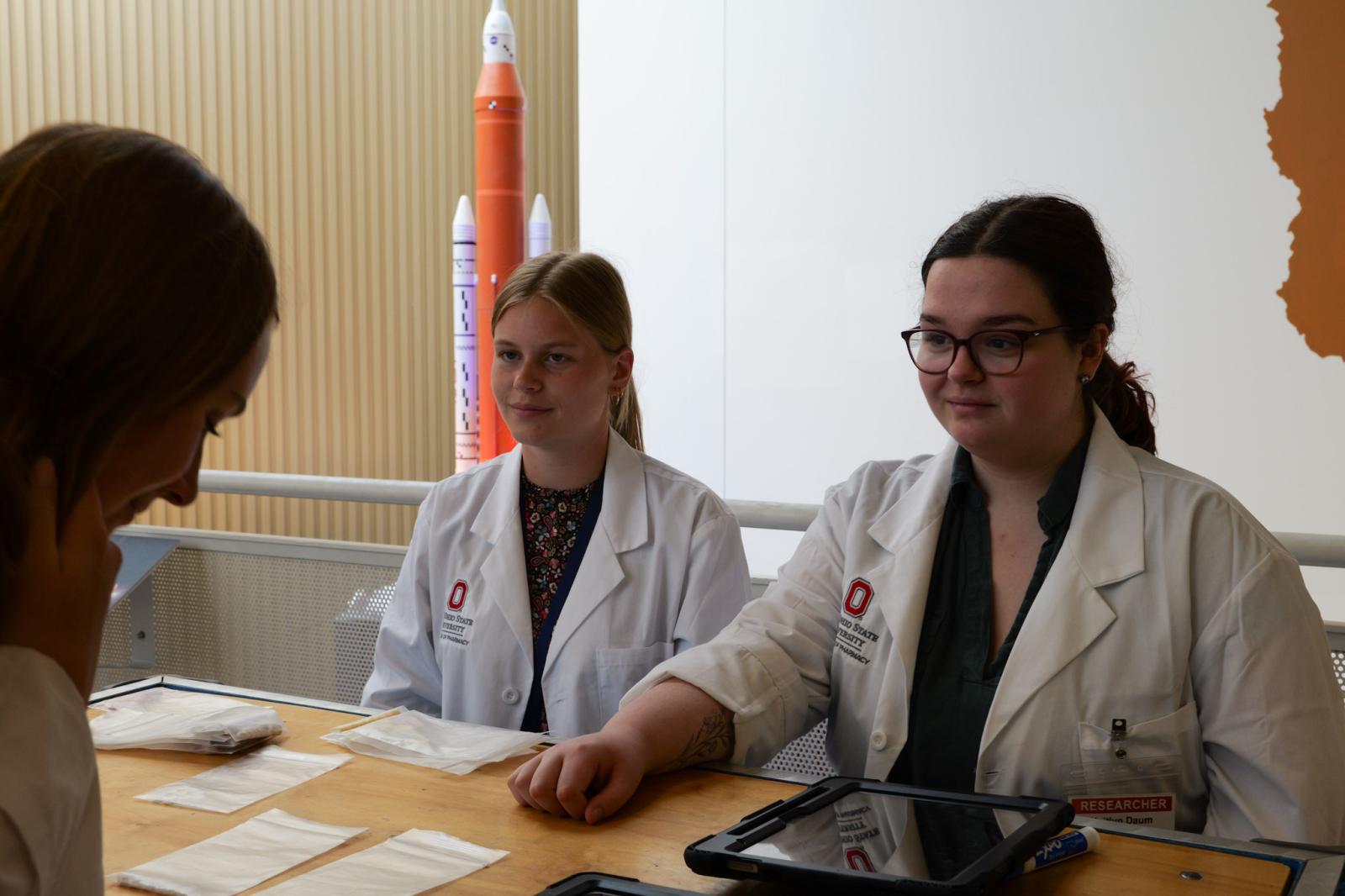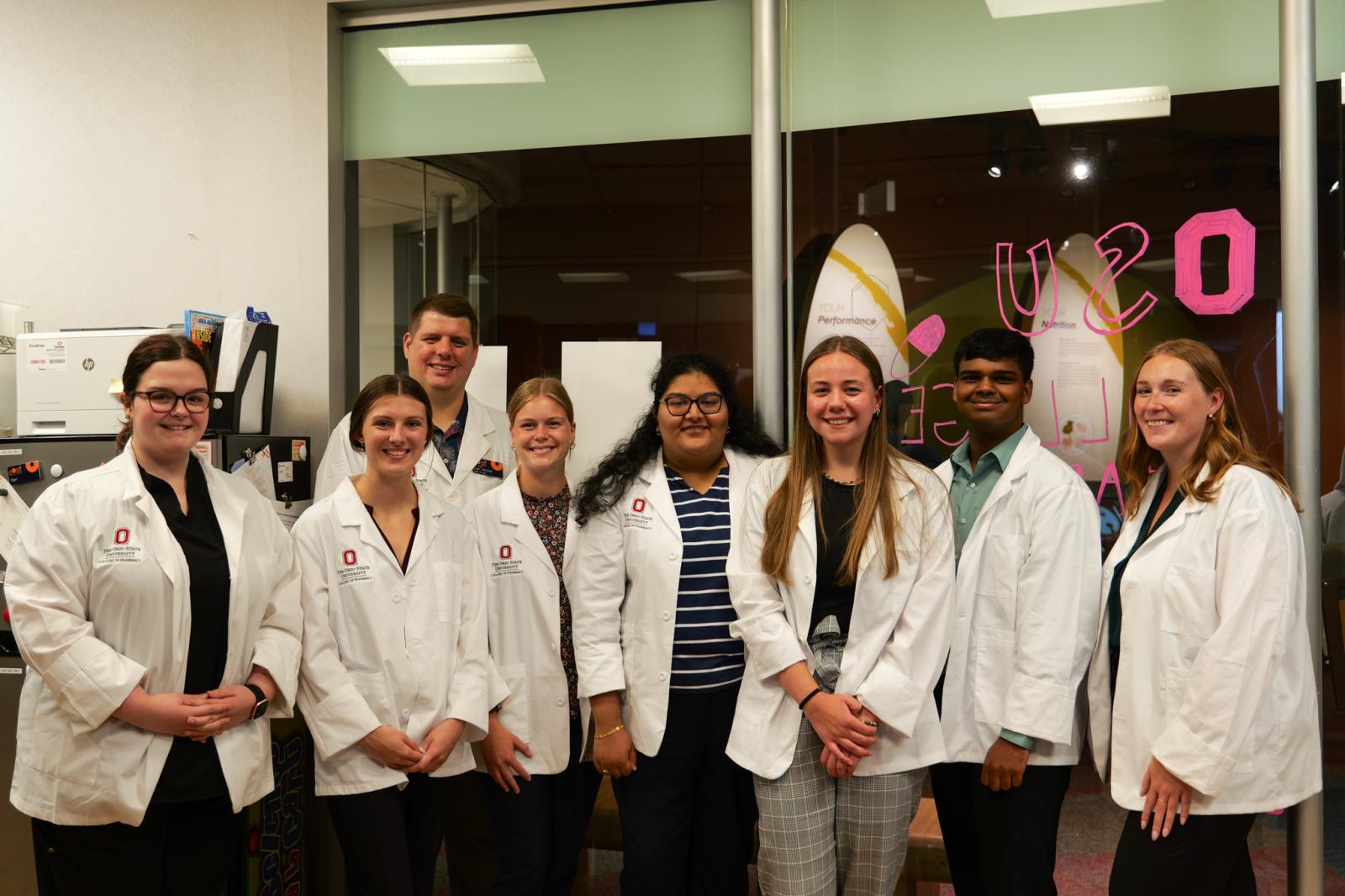Making COSI a hub for undergraduate research

Just inside of the Life exhibit at the Center of Science and Industry (COSI) in Columbus, there are three rooms with windows from floor to ceiling. These fishbowls offer a space for researchers from The Ohio State University to conduct outreach and collect data under the watchful eye of museum visitors.
One of these lab spaces is occupied by the Ohio State College of Pharmacy. It was established in 2012 as a collaboration between Generation Rx, COSI and the Cardinal Health Foundation to promote and demonstrate medication safety to guests.
This summer, Senior Lecturer and the lab’s current Director Dan Michel, PhD, joined forces with Practice Advancement and Advocacy Fellow Bella Blankenship, PharmD, RPh, to turn the lab into an undergraduate research hub.
The co-investigators were awarded a $10,000 grant from Ohio State’s Office of Undergraduate Education to fund a study looking at how the public’s perception of direct-to-consumer prescription drug advertising impacts patient-provider interactions.
“During my time in the legislative space, I became interested in the regulatory aspects of pharmacy, particularly relating to drug advertising in the U.S.,” Dr. Blankenship explained. “When I had the opportunity to see a research project through as a part of my fellowship, I knew I wanted to dive further into how direct-to-consumer advertisements impact consumers and the future of policy.”
Drs. Michel and Blankenship began their search for students in early 2024, ultimately recruiting six students with backgrounds ranging from finance to pre-med. Students would assist Dr. Blankenship’s research by recruiting study participants and administering surveys at COSI.

Before the students set out for the bustling floors of COSI, Drs. Michel and Blankenship led them through a series of research training sessions and pharmacy education seminars. With such a variety of student specialties, the two co-investigators wanted to ensure that everyone had the proper foundation to engage in conversations about pharmacy with guests.
COSI offers a uniquely conducive environment for students to get their foot in the door with data collection and outreach. With their new pharmacy expertise, the student researchers leveraged the enthusiasm of museum guests and recruited them for participation in the study’s survey.
“The growth we witnessed the students go through while recruiting participants was amazing,” Dr. Michel reflected. “Many of them went from being visibly nervous and hesitant to approach guests at the start of the summer to actively engaging and holding their own health care conversations related and unrelated to the research question.”
By the program’s end in July, students had successfully administered over 600 unique visitor surveys.

To add variety to their work, students would take breaks from recruiting for the survey to offer pharmacy learning activities from the lab’s mobile education stations.
Visitors of all ages were engaged in a variety of pharmacy-focused outreach, including a compounding simulation, a demonstration on the importance of finishing a course of antibiotics and a crash course on how pharmacists check prescriptions in community pharmacies. Each activity demonstrated a core pharmacist responsibility for participants.
By the end of the summer, students successfully engaged with nearly 4,000 COSI visitors. Their interactions painted a picture of how the Columbus community understands the role of pharmacists.
“Visitors had a lot of misperceptions of what exactly pharmacists do,” said student researcher Chanuth Ranathunga. “But they’d also surprise us a lot. One thing that many of them brought up in our discussions was that the United States and New Zealand are the only countries that allow prescription drug advertisements directly to consumers. It seemed to be everyone’s favorite fun fact.”
During the program’s last month, student researchers had the chance to help Dr. Michel design a new research study. This investigation focused on the public’s perception of pharmacists. After weeks of conversing with guests about the role of pharmacy and pharmacists, students were clued into the subject.
In collaboration with Assistant Professors Myriam Shaw Ojeda, PharmD, MPH, and E. Michael Murphy, PharmD, MBA, the coinvestigators created a survey for their new research question.
Once the new survey was approved, students also assisted in recruiting guests and administering surveys for the start of the new study. Data collection will continue through the fall.

"Visitors had a lot of misperceptions of what exactly pharmacists do."
As for the future of undergraduate involvement at COSI, Dr. Michel is eager to maintain this unique offering. This fall, Dr. Michel is teaching Pharmacy 3410: Science, Communication and Engagement. The summer’s research at COSI has informed the structure of the course, which will invite undergraduate students to continue working in the Labs in Life space.
Though classes have begun for this academic year, Drs. Michel and Blankenship are enthusiastic to continue supporting undergraduate research at COSI next summer.
“With such a diverse group of students early in their careers and research journeys, it was special to work with them to build foundational skills that will continue to be important throughout their lives,” Dr. Blankenship said. “Their confidence clearly grew and even though this was a research experience, it ultimately became about our students’ self-awareness and understanding their professional strengths.”